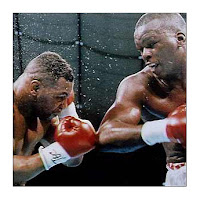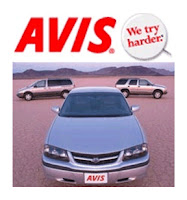Free Download
The Voice of the Underdog®
Chapter 1
If you are a sports fan, you remember the famous hockey game played during the Lake Placid Olympics. It’s the game they call “The Miracle on Ice.” Now 35 years later, people still refer to the U.S. amateur Olympic team’s victory over the Soviet team’s professional players as the biggest upset in sports history. In fact, ESPN’s “The List,” which tallies votes from fans on the biggest sports upsets of all time, ranks this game number one with more than 54 percent of votes. No wonder Hollywood was still making movies about it 25 years later.
Unless there’s money or emotion invested in the probable outcome of an event, we all love an upset. It’s great when the underdog beats the snot out of the favorite the way David took it to Goliath in the Valley of Elah back in the day. Even if you’re not an Ohio State fan, who didn’t love the number four seed taking it to Number One Alabama and Number two Oregon in the first ever NCAA National Championship playoff. OSU shouldn’t even have been there, right?
Nobody gave the kids from Columbus a chance. But they beat the odds and finished the playoff as college football’s new national champions. In fact, the world of sports is full of inspirational underdog victories and jaw-dropping, come-from-behind triumphs. And so is the business world. After watching Ohio State, I started thinking about what it takes to win when nobody thinks you can.
Before I try to answer that question, it’s worth stating that being an underdog can be a significant advantage. After all, as an underdog you have nothing to lose and everything to gain, and it’s easier to be impressive when nobody expects you to impress. Low expectations can play to your favor in a couple of other ways, too. It’s not hard to catch an opponent napping when they buy into your second-rate status and discount your presence while focusing on other competitors. And, of course, it keeps you humble. Humility is always better than arrogance.
But freedom from expectation and a healthy dose of humility alone won’t get the job done. Through business and personal experience, I’ve identified four elements that, when present together, can level the playing field for an underdog and make winning anything but unlikely.

1. Believe. It sounds obvious, but belief is very powerful. If you listen closely to post-game interviews, coaches and athletes almost always say they never stopped believing in themselves.
Back in 1990, well before “Iron” Mike Tyson became a notorious thug outside the ring (and a beloved actor), he was regarded by the boxing community as an invincible champion. Tyson is easily one of the 10 best heavyweight fighters of all-time, and he was in his prime when he took a fight with a boxer named Buster Douglas. Tyson entered the ring the evening of February 11, 1990, with a record of 37-0 and 33 knockouts. Most opponents lasted just a few rounds before they were felled by one of his brutally powerful punches. Douglas’ record, on the other hand, was a spotty 29-4-1 with 19 knockouts. Three of his four losses were by knockout, and he had simply quit in one fight. Douglas personified “underdog.” In fact, the only odds posted on the fight in Las Vegas were at the Mirage Casino Hotel where Tyson was the 45-1 favorite.
 But Douglas drew strength from the recent death of his mother. His manager, John Johnson, said Douglas approached the fight with incredible training, discipline and emotion. “He believed in himself,” Johnson said. On that February night in Tokyo, fans sat stunned as Tyson faltered under a furious combination from Douglas and hit the deck with 1:37 left in the 10th round. He had never before been knocked out. Of the defeat, one journalist wrote, “The sight of Mike Tyson rolling around on the canvas, trying to put his mouthpiece back in was alarmingly pathetic. An image no boxing fan will soon forget.”
But Douglas drew strength from the recent death of his mother. His manager, John Johnson, said Douglas approached the fight with incredible training, discipline and emotion. “He believed in himself,” Johnson said. On that February night in Tokyo, fans sat stunned as Tyson faltered under a furious combination from Douglas and hit the deck with 1:37 left in the 10th round. He had never before been knocked out. Of the defeat, one journalist wrote, “The sight of Mike Tyson rolling around on the canvas, trying to put his mouthpiece back in was alarmingly pathetic. An image no boxing fan will soon forget.”
The fight is regarded as the biggest upset in boxing history.
In a post-fight interview, Douglas said it was his late mother’s belief in him that spawned his belief in himself. He simply believed he could win and he acted that way.
 2. Try Harder. In 1962, advertising legend Bill Bernbach had an insight that helped turn Avis from an unprofitable company with 11 percent of the car rental business into a profitable company with 35 percent market share just three years later. The “We Try Harder” campaign was a smashing success and endures as the company’s tagline almost half a century later. The key insight: one way to beat a bigger, more successful competitor is to simply put more effort into it. Here’s a little taste of the Avis manifesto as stated in one of the campaign’s earliest print ads:
2. Try Harder. In 1962, advertising legend Bill Bernbach had an insight that helped turn Avis from an unprofitable company with 11 percent of the car rental business into a profitable company with 35 percent market share just three years later. The “We Try Harder” campaign was a smashing success and endures as the company’s tagline almost half a century later. The key insight: one way to beat a bigger, more successful competitor is to simply put more effort into it. Here’s a little taste of the Avis manifesto as stated in one of the campaign’s earliest print ads:
“We’re in the rent-a-car business, playing second fiddle to a giant. Above all, we’ve had to learn how to stay alive. In the struggle, we’ve also learned the basic difference between the No. 1’s and No. 2’s of the world. The No. 1 attitude is: ‘Don’t do the wrong thing. Don’t make mistakes and you’ll be OK.’ The No. 2 attitude is: ‘Do the right thing. Look for new ways. Try harder.’”
Try harder. You get the idea.
3. Work Smarter. Believing and trying harder are essential for victory, but most underdogs simply don’t have the capacity to out-work the competition. So working smarter is the only option. This isn’t as easy as it sounds. The competition isn’t stupid and you can bet they’re trying to work smarter, too. There are tomes written on this subject but most of what you’ll read boils down to finding new and innovative ways of doing things when traditional competitive approaches falter. Above all, working smarter requires creativity and resourcefulness and a determination to stretch beyond convention.
Twnety five years removed from the introduction of the revolutionary Lisa personal computer, Apple’s market share was just a modest two percent worldwide. Not even a decade ago, the computing industry was dominated by PC behemoths Dell and HP, who together controlled more than a third of the market. Since its high-flying early years, Apple’s sometimes shaky hold on survival had been rooted firmly in its ability to appeal to the right-brainers it courts with software aimed at creative endeavors. A true underdog, Apple and its colorful founder, Steve Jobs – a man who has contributed greatly to the mythos of the quirky, individualistic Silicone Valley entrepreneur – had always had to rely on wits to out-maneuver larger, more powerful competitors.
 Working smarter, Jobs saw an opportunity for innovation as the music industry struggled mightily to thwart the efforts of early music file sharing sites. The sites were costing the music industry untold billions of dollars, and the big labels were beside themselves. Litigation – a traditional corporate weapon of choice – proved useless. By 2003, more than two billion illegal music files were being traded every month across the globe. Due largely to the trend of illegal file sharing, Apple’s iPod MP3 player was a smash hit when it was introduced in 2001. But Jobs saw an even bigger play. He struck an agreement with five major record labels to offer legal, easy-to-use, and flexible a la carte music downloads for as little as 99 cents each. iTunes was born. The digital media application leapt past free downloading services by providing superior sound quality, as well as intuitive navigating, searching and browsing. As part of the agreement, music companies and artists get 65 percent of the purchase price, finally benefiting from the digital downloading craze.
Working smarter, Jobs saw an opportunity for innovation as the music industry struggled mightily to thwart the efforts of early music file sharing sites. The sites were costing the music industry untold billions of dollars, and the big labels were beside themselves. Litigation – a traditional corporate weapon of choice – proved useless. By 2003, more than two billion illegal music files were being traded every month across the globe. Due largely to the trend of illegal file sharing, Apple’s iPod MP3 player was a smash hit when it was introduced in 2001. But Jobs saw an even bigger play. He struck an agreement with five major record labels to offer legal, easy-to-use, and flexible a la carte music downloads for as little as 99 cents each. iTunes was born. The digital media application leapt past free downloading services by providing superior sound quality, as well as intuitive navigating, searching and browsing. As part of the agreement, music companies and artists get 65 percent of the purchase price, finally benefiting from the digital downloading craze.
Today, Apple is arguably one of the 2-3 most powerful brands on the planet and their success can all be attributed to thinking like a challenger brand. As their brand line commands, thinking differently. And what of the former Goliaths of the computer industry? They’re still a little dazed by the rock that hit them between the eyes.
4. Persist. When Bill Porter was 13 years old, he decided he wanted to be a salesman just like his father. Trouble was, Bill’s body was afflicted with cerebral palsy, which made it difficult to get out of bed in the morning, much less conquer the world as a salesman.
When Bill graduated from high school, he wanted to make something of himself and he turned to the Oregon State Vocational Rehabilitation Division for help. But he couldn’t use a cash register, unload trucks or function as a telephone solicitor. So they called him “unemployable” and said he should collect government disability checks for the rest of his life. Bill was most certainly an underdog.
But his mother believed he could rise above his limitations (see element number one) and urged him to persist. And persist he did. He applied for sales jobs only to be turned down one after another until finally he landed a position selling household products door-to-door. But it wasn’t much of a gig.
 Bill was given a territory in a section of Portland nobody wanted. The trials and tribulations of a man fighting his body as he walked 10 miles a day for more than 40 years in an unforgiving, competitive environment to eek out a living is the stuff of Hollywood. In fact, Bill’s persistence and ultimate victory over his circumstances was celebrated in a movie called “Door to Door” released in 2002. By 1995, Bill was his company’s top retail salesman for Oregon, Idaho, Washington and California. His story has been told on “20/20” and by magazines like Reader’s Digest, both generating unprecedented amounts of viewer and reader response.
Bill was given a territory in a section of Portland nobody wanted. The trials and tribulations of a man fighting his body as he walked 10 miles a day for more than 40 years in an unforgiving, competitive environment to eek out a living is the stuff of Hollywood. In fact, Bill’s persistence and ultimate victory over his circumstances was celebrated in a movie called “Door to Door” released in 2002. By 1995, Bill was his company’s top retail salesman for Oregon, Idaho, Washington and California. His story has been told on “20/20” and by magazines like Reader’s Digest, both generating unprecedented amounts of viewer and reader response.
Whether it’s a business venture, a job search, a personal challenge or a game, competing with the mindset of an underdog can turn out to be an advantage. The Soviets learned this the hard way in 1980 and so did Mike Tyson a decade later. Believe, try harder, work smarter and persist. When the odds are long and the smart money says you can’t, these four elements can make the difference between winning and losing.
And victory is never so sweet than when it’s lapped up by an underdog.
We challenge underdog brands to think differently. We help them find their voice, and urge them to blaze new trails to make sure they stand out from the pack. Whether you need an agency of record or support on a project, we are here to help you win.